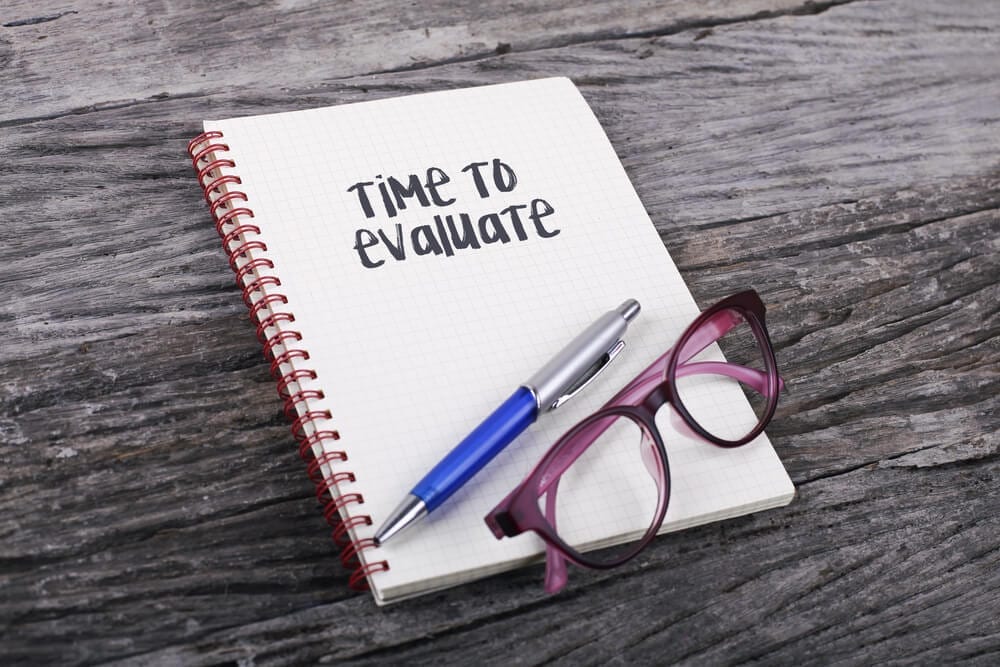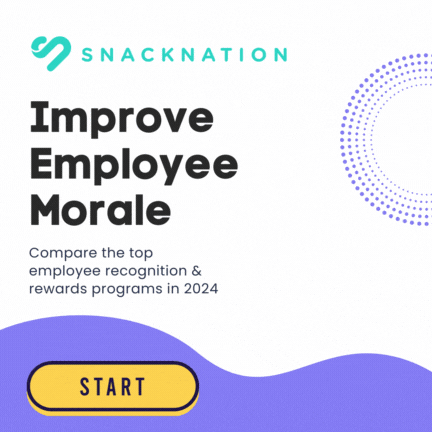Improving employee engagement presents tons of challenges. By trying to improve employee engagement, you’re really trying to get employees to change their opinions and behaviors, and that’s hard work.
So if you’re trying to develop a strategy to boost employee engagement, then we understand if you feel a little overwhelmed. In fact, that’s why we created this guide. We’ve done the research and come up with the best ways to improve employee engagement quickly and effectively
The Case for Employee Engagement
Gallup, famous for their refined surveys and polls, has done extensive investigative work on employee engagement. Their team has been gathering information for over 30 years from more than 30 million employees.
And guess what? Gallup found that employee engagement provides just as many benefits as you would assume it does. The team’s observations suggest that employee engagement may:
- Increase profits. (One company improved engagement and saw over $80 million in profit growth.)
- Reduce turnover. (One employer took their turnover rate from 42% to 1%.)
- Boost profitability ratios.
Define Your Company’s Idea of Engagement
Here are some general definitions of employee engagement:
- Business Dictionary: Emotional connection an employee feels toward his or her employment organization, which tends to influence his or her behaviors and level of effort in work related activities.
- Forbes: The emotional commitment the employee has to the organization and its goals.
- Talent Map: A positive, energized state of mind that stems from both a cognitive and an emotional investment of personal energy that is focused on transforming a work task, a team goal, and/or an organization outcome into a meaningful business objective.
Pretty awesome, right? But general definitions go only so far in helping you boost engagement levels at your own company. Your company’s definition of employee engagement will be different from every other company’s, and that makes all the difference when you want to improve engagement.
Take a few hours to fill in the blank spaces after every ellipsis below.
- Engaged employees…
- Disengaged employees…
- We will measure employee engagement by…
Here’s an example:
At the Lamplight Agency…
- Engaged employees…come up with self-initiated projects, talk about their big ideas, and champion client interests.
- Disengaged employees…do the bare minimum, rarely weigh in during brainstorms, and complain about clients.
- We will measure employee engagement by…
1) Implementing standardized project management software to follow self-initiated projects
2) Developing a participation point system to track contributions to meetings.
The last bullet will be crucial to your mission to improve employee engagement. Select your measurement criteria and techniques carefully. You will revisit these items later on, when you’re evaluating whether or not your engagement tactics have been successful.
Implementing Employee Engagement Tactics
Here’s a breakdown of tactics for a few different employee engagement ideas you may want to try at your company.
Perfect your company communications.
Delegate to: Department Managers
Tactics:
- Send department managers the below list of best practices (from SnackNation’s employee engagement guide). These tips will help managers focus on communication as an engagement tactic.
Communications should be:
- Frequent and consistent
- A two-way street
- Consistent with the brand and culture
- Multi-channel
- Fully inclusive
You can ask managers to submit proposals that detail how they plan to execute these communications best practices in their day-to-day work, or you can recommend actions you would like them to take.
For example:
- To keep your communications frequent and consistent, please set up weekly all-hands meetings with your entire team as well as individual one-on-one meetings on a minimum bi-weekly basis.
- To promote two-way communication, frequently ask employees for their thoughts and opinions.
- Make it easy for employees of all personalities to provide feedback by offering multiple online and in-person communication channels; send follow-up emails after meetings, make yourself available through convenient workplace communications solutions, including Yammer, Slack, Tibbr, Jive, and Salesforce Chatter.
Do a deep dive into job descriptions, even if you’re not hiring.
(Employees will find it easier to engage in roles they truly understand. If they truly understand their roles, then they can truly engage in doing what it takes to be successful.
Delegate to: Human Resources
Tactics:
- For open positions, Human Resources and collaborators can refine job descriptions by incorporating feedback from direct managers, reviewing (or conducting) exit interviews, and scouring through annual reviews.
- For filled position, Human Resources and collaborators can talk straight to position-specific experts—the people in each role—in addition to talking to direct managers and incorporating annual review data.
- Help employees understand how they’re contributing to the overall goal by adding a line item to every single job description that explains exactly how the role contributes to the overall company mission.
Take a (multi-angled) look at company and individual goals.
Find your company’s purpose to help employees find their purpose and engage in achieving goals.
Delegate to: All employees – from the top down
Tactics:
- As a group, take a deep dive into your overall company mission.
- If you don’t already have a clearly defined mission, then work together to create one that everyone finds both clear and exciting.
- If you do already have a mission, then make sure it’s still working. Have employees detail what the mission means to them, and also ask them to explain what they’re doing to fulfil it. If anyone struggles to answer either of these prompts, then it could indicate that your mission needs revising.
- Invite employees to set their own goals, preferably goals that fit into the overall company mission. Giving employees some autonomy and creativity will help them feel more engaged in your company’s collective vision.
- Invite employees to set a few stretch goals—ambitious, long-term goals—to keep them engaged and invested in the future.
- Keep employees invested in company goals by frequently sharing progress toward the overall company mission. For example, Nordstrom’s mission statement is “To give customers the most compelling shopping experience possible.” So for example. companies with similar missions could call all employees together to share glowing customer reviews that demonstrate the end results of hard work.
Achieve company growth by focusing on personal growth and development
Delegate to: Department Managers
- Give department managers a budget for employee development. Many employees have tons of ideas for skills they might like to develop, but they may not be sure of how much support they would get from the company if they decided to go for it. Make it clear that you support employee growth. For example, you could suggest offering growth stipends or a bank of “hours off” to dedicate to personal growth.
- Evaluate employees with the future in mind. Most managers evaluate employees only by the parameters of their current jobs. Managing for growth requires adding a layer of foresight to both informal and formal feedback; employees should know how to excel at their current jobs, but they should also be sure what they need to do, demonstrate, and accomplish to take the next steps in their career paths.
Focus on multiple aspects of employees’ lives.
Delegate to: Human Resources
- Start a health and wellness program. As the workplace trend experts as Automatic Data Processing (or ADP) point out, employees with turbulent personal lives may not be optimally engaged at work because they’re preoccupied with emotional troubles or physical pain from unhealthy lifestyles. A health and wellness program may be able to mitigate some of those issues. According to a Gallup poll, 62% of the employees who feel the most engaged at work also feel that their work positively affects their lives.
- Offer mental health counseling, financial advising, and other forms of support that transcend the invisible line between modern work and personal life.
Evaluate Success and Determine Next Steps
After you’ve implemented some employee engagement tactics and let them “run” for a few months, it’s time to determine if your employee engagement strategies are working.
Revisit the definition of employee engagement you created for your company. How did you say you were going to measure engagement? It’s time to bring your strategic words to life.
In our example, we said:
“We will measure employee engagement by implementing standardized project management software to follow self-initiated projects and developing a participation point system to track contributions to meetings.”
So in this phase of the process, we would check in on both of these measurement tactics.
For example, we might ask ourselves the following questions:
- Are people using project management tools to track their self-initiated projects?
- Are they completing projects?
- How is the meeting point system working?
- Are managers using the point system to track meeting participation?
- Are the points is providing a potentially accurate measure of employee engagement?
In addition to company-specific measurement tactics, you can use various employee survey tools to launch surveys and polls. Furthermore, you can conduct interviews to get some qualitative feedback on your engagement programs, ideally feedback ripe with tidbits you won’t be able to glean from participation charts or software usage. These are the kind of employee engagement activities that will make an impact on future productivity and employee retention.
We recommend talking to as many different groups via as many different opinion-collection methodologies as possible.
For example, you could:
Survey the entire company. For each engagement initiative or tactic you’ve implemented, ask employees:
- If they’re using engagement tactic X. (If they’re not using it, then ask why.)
- How helpful they find engagement tactic X. (Use a scale. For example, 1 = not helpful at all and 5 = extremely helpful.)
- If they are likely to continue using engagement tactic X if it is offered. (Use a scale.)
- How engaged they feel at work.
Interview employees one on one to get candid feedback on engagement initiatives.
Interview company leadership and department managers to get their opinions on how employees feel about the engagement initiatives.
After you get a strong sense of how your employee engagement tactics performed, decide what to do next.
- Your next steps could be simple. (Continue all programs because employees love them!)
- Your next steps could be challenging. (Develop all-new initiatives based on negative employee feedback.)
But if you keep implementing, measuring, and reevaluating your strategy, you will improve your employee engagement, so stick with it!
What are the best employee engagement tactics you’ve even seen? We’d love to hear your expert observations and opinions!















Hi Ashley,Thanks for sharing, Your article on Employee Engagement is very informative and it is very much needed for the organisation.Worldwide, only 13 percent of employees consider themselves to be fully engaged, according to leading industry research. These are worrying statistics, lack of employee engagement is not healthy for an organization and it may further lead to the need for ‘employee replacement’ which costs a huge amount.Your guidelines regarding Employee Engagement is very useful. looking forward for more.Thanks in advance.